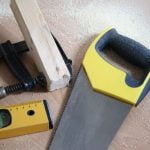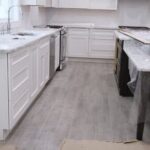Are you considering making improvements to your home but are unsure about your financing options? The question “can you borrow against your mortgage for home improvements” may have crossed your mind. This article will provide you with a comprehensive guide to understanding the concept of borrowing against your mortgage for home improvements and help you make an informed decision.
Borrowing against your mortgage for home improvements entails using the equity in your home as collateral to secure a loan. This enables homeowners to fund renovations, repairs, or other improvement projects without resorting to high-interest personal loans or credit cards. By leveraging the value of their homes, homeowners can access substantial funds at more favorable interest rates.
In this article, we will delve into the process of borrowing against your mortgage for home improvements, explore the pros and cons of this approach, and provide valuable tips for successfully navigating through it. Additionally, we will discuss important considerations before making this financial decision and compare different options such as mortgage refinancing vs. home equity loans.
Whether you’re looking to upgrade your kitchen, add a bathroom, or undertake any other project, understanding how to borrow against your mortgage can be crucial in achieving your desired home improvements while maintaining financial stability.
The Process of Borrowing Against Your Mortgage for Home Improvements
Borrowing against your mortgage for home improvements is a way for homeowners to access the equity in their homes in order to fund renovations, repairs, or other improvement projects. This process allows homeowners to leverage the value of their property to secure funds for making their homes more functional, aesthetically pleasing, or energy efficient.
Home Equity Assessment
The first step in the process of borrowing against your mortgage for home improvements is to assess the equity you have built up in your home. Home equity is the difference between the current market value of your property and the amount you still owe on your mortgage. Lenders typically allow homeowners to borrow up to a certain percentage of their home’s equity, often around 80-85%.
Mortgage Options
Once you have determined the amount of equity available in your home, you can explore different borrowing options. Two common ways to borrow against your mortgage for home improvements are through a cash-out refinance or a home equity loan/line of credit.
A cash-out refinance involves replacing your existing mortgage with a new one that has a higher principal balance, allowing you to borrow the difference in cash. A home equity loan or line of credit allows you to borrow against the equity in your home while keeping your original mortgage intact.
Application and Approval
After selecting the borrowing option that best suits your needs, you will need to complete an application with a lender and provide documentation regarding your income, assets, and credit history. The lender will assess your financial situation and determine if you qualify for the amount you wish to borrow. If approved, you can then use the funds from borrowing against your mortgage for approved home improvement projects.
By understanding and following this process, homeowners can take advantage of borrowing against their mortgages for necessary or desired home improvements.
Pros and Cons of Borrowing Against Your Mortgage for Home Improvements
Borrowing against your mortgage for home improvements can be a convenient way to finance renovations, but it’s important to weigh the pros and cons before making a decision. One of the main advantages of borrowing against your mortgage is that it can provide you with access to a large sum of money at a lower interest rate compared to other types of loans. This means that you can potentially save money on interest payments in the long run.
On the other hand, there are also some drawbacks to consider when borrowing against your mortgage for home improvements. For example, increasing your mortgage debt could lead to higher monthly payments and a longer repayment period. Additionally, if you are unable to make the required payments, you may risk losing your home through foreclosure.
It’s important to carefully consider your financial situation and goals before deciding whether or not borrowing against your mortgage for home improvements is the right choice for you. While it can provide necessary funds for renovations, it’s essential to assess the potential long-term impact on your finances and housing security. Consulting with a financial advisor or mortgage lender can help you determine whether this option is suitable for your specific needs and circumstances.
Exploring Different Types of Home Improvement Projects You Can Finance With a Mortgage Loan
When it comes to home improvement projects, there are a variety of options that you can finance with a mortgage loan. Whether you are looking to renovate your kitchen, add an extra bedroom, or upgrade your outdoor living space, borrowing against your mortgage can provide the funds needed to bring your vision to life. Here are some different types of home improvement projects that you can consider financing with a mortgage loan:
- Kitchen Remodel: Upgrading your kitchen can not only enhance the aesthetic appeal of your home, but also increase its value. From new countertops and appliances to updated cabinetry and flooring, a kitchen remodel can transform the heart of your home.
- Bathroom Renovation: A bathroom renovation can add luxury and functionality to your home. Whether you want to create a spa-like retreat or simply update the fixtures and finishes, financing this project with a mortgage loan can help achieve the desired results.
- Home Addition: If you need more space, adding an extra bedroom, expanding the living area, or building a sunroom can accommodate your growing family or provide additional room for entertaining.
It is important to carefully consider which home improvement projects align with your goals and budget before deciding to borrow against your mortgage. Given that these loans utilize your property as collateral, it is essential to ensure that the improvements will contribute positively to the value of your home in the long run.
In addition to these common projects, there are many other types of improvements you may want to consider for funding through a mortgage loan. Whether it’s enhancing curb appeal through landscaping and hardscaping or creating an outdoor oasis with a deck or patio, there are numerous possibilities for using borrowed funds from your mortgage to improve and customize your living space.
Ultimately, by choosing smart improvements that enhance both the enjoyment and resale value of your home, borrowing against your mortgage for certain types of renovations can be an effective way to invest in one’s property.
Tips for Successfully Borrowing Against Your Mortgage for Home Improvements
When it comes to borrowing against your mortgage for home improvements, there are a few key tips to keep in mind to ensure a successful and beneficial outcome. Here are some tips to consider before taking the plunge into financing your home improvement projects with a mortgage loan.
Assess Your Financial Situation
Before deciding to borrow against your mortgage for home improvements, it’s important to take a close look at your financial situation. Consider factors such as your income, existing debt, credit score, and overall financial stability. Make sure you have a clear understanding of how much you can realistically afford to borrow and repay without putting yourself in a precarious financial position.
Research Lenders and Loan Options
Shop around and compare different lenders and loan options to find the best fit for your specific needs. Look into the terms and interest rates offered by various lenders, as well as the flexibility of the loan terms. Whether you choose a traditional mortgage refinance or a home equity loan, it’s essential to do your due diligence and choose the option that aligns best with your financial goals.
Plan Your Home Improvement Projects Wisely
Before borrowing against your mortgage for home improvements, carefully plan out the projects you intend to finance. Create a detailed budget for each project and prioritize those that will add the most value to your home. Remember that you’re using your home as collateral for these loans, so it’s crucial to invest in upgrades that will enhance its overall value.
By keeping these tips in mind, you can navigate the process of borrowing against your mortgage for home improvements with greater confidence and success. It’s important to approach this decision with careful consideration and sound financial planning before moving forward with any loan agreements or home improvement projects.
Important Considerations Before Borrowing Against Your Mortgage for Home Improvements
Borrowing against your mortgage for home improvements can be an attractive option for homeowners looking to finance renovations or upgrades to their property. However, it’s important to carefully consider a few key factors before making this decision.
One of the most important considerations is the impact on your overall financial situation. When you borrow against your mortgage for home improvements, you are essentially increasing the amount of debt secured by your property. This means that you will have higher monthly payments and potentially a longer repayment period. It’s crucial to assess whether you can comfortably afford these additional financial obligations.
Another important consideration is the potential impact on the equity in your home. Equity is the difference between the market value of your property and the outstanding balance on your mortgage. By borrowing against your mortgage for home improvements, you are tapping into this equity. This could affect your ability to access equity in the future, such as when selling the property or applying for another loan.
Additionally, it’s essential to carefully evaluate the cost of borrowing against your mortgage for home improvements. This includes considering interest rates, fees, and any associated closing costs. It’s advisable to shop around and compare different financing options to ensure that you are getting the most favorable terms available.
| Key Consideration | Impact |
|---|---|
| Financial Situation | Higher monthly payments and potentially a longer repayment period |
| Equity in Your Home | Tapping into equity could affect ability to access equity in the future |
| Cost of Borrowing | Evaluating interest rates, fees, and closing costs |
Ultimately, before borrowing against your mortgage for home improvements, it’s important to weigh the benefits and risks carefully. While this type of financing can provide funding for valuable enhancements to your property, it’s essential to make an informed decision that aligns with your long-term financial goals.
Comparing the Options
When it comes to financing home improvements, homeowners have a few options, with two of the most common being mortgage refinancing and home equity loans. Both options allow homeowners to borrow against their mortgage, but they work in different ways.
Mortgage refinancing involves replacing your existing mortgage with a new one that has a higher balance. This allows you to take out the difference in cash and use it for home improvements. On the other hand, a home equity loan is a separate loan that uses the equity in your home as collateral.
There are advantages and disadvantages to both options. With mortgage refinancing, you may be able to secure a lower interest rate on the additional funds you borrow, especially if current interest rates are lower than when you originally obtained your mortgage. However, this process often involves closing costs and fees which can add up. Home equity loans typically have higher interest rates than mortgage refinancing, but they usually come with lower upfront costs.
It’s important to carefully consider your financial situation and goals when deciding between mortgage refinancing and home equity loans for home improvements. You should also consider how much equity you have in your home and whether you want a fixed or variable interest rate. In either case, consulting with a financial advisor can help ensure that you make an informed decision that aligns with your long-term financial plan.
| Options | Mortgage Refinancing | Home Equity Loans |
|---|---|---|
| Interest Rates | Lower, especially if current rates are lower | Higher than mortgage refinancing |
| Upfront Costs | Closing costs and fees | Lower than mortgage refinancing |
Real-Life Examples of Homeowners Who Have Borrowed Against Their Mortgages for Home Improvements
Many homeowners find themselves in a position where they need to make significant improvements to their homes but may not have the immediate cash on hand to finance these projects. In such cases, borrowing against your mortgage for home improvements can be an appealing option. By leveraging the equity in your home, you can secure funding for renovations, expansions, or other upgrades that can increase the value and functionality of your property.
For example, one homeowner chose to borrow against their mortgage in order to finance a major kitchen renovation. By tapping into the equity built up in their home, they were able to cover the costs of new appliances, cabinets, countertops, and flooring without having to dip into their savings or take out a high-interest personal loan.
This allowed them to complete the project with confidence and peace of mind, knowing that they had secured a favorable financing option through their mortgage lender.
In another real-life scenario, a couple decided to borrow against their mortgage to fund a backyard landscaping project. By using the equity in their home as collateral, they were able to create an outdoor living space complete with a patio, fire pit, and garden beds.
This not only enhanced their enjoyment of their property but also increased its overall value. The ability to borrow against their mortgage provided them with the means to undertake this substantial project without having to compromise on design or materials.
Conclusion
In conclusion, when considering borrowing against your mortgage for home improvements, it is important to carefully weigh the pros and cons. While this option can provide you with the funds needed to enhance your living space, it also comes with added debt and financial responsibilities. Careful planning and consideration of your financial situation are crucial before making this decision.
Before deciding to borrow against your mortgage for home improvements, it’s important to thoroughly research the process and understand all the associated costs and potential risks. Consulting with a financial advisor or mortgage specialist can provide valuable insight into whether this option is right for you. Additionally, exploring alternative financing options such as personal loans or savings may offer more flexibility and less financial strain in the long run.
Ultimately, as with any major financial decision, it’s important to approach borrowing against your mortgage for home improvements cautiously and responsibly. By thoroughly understanding the process, exploring different types of improvement projects that can be financed with a mortgage loan, and carefully considering all available options, homeowners can make an informed decision that aligns with their financial goals and priorities.
Frequently Asked Questions
Can I Borrow More on My Mortgage for Home Improvements?
It is possible to borrow more on your mortgage for home improvements, depending on your lender’s policies. You may be able to do a cash-out refinance or take out a renovation loan to fund the improvements.
Is a Home Equity Loan a Good Idea for Home Improvements?
A home equity loan can be a good idea for home improvements if you have significant equity in your home and a stable financial situation. However, it’s important to consider the risk of using your home as collateral for the loan.
Can You Add a Home Improvement Loan to Your Mortgage?
Adding a home improvement loan to your mortgage can be done through a cash-out refinance or a renovation loan. This allows you to roll the cost of the improvements into your mortgage, potentially with relatively low interest rates compared to other types of loans.

I’m thrilled to have you here as a part of the Remodeling Top community. This is where my journey as an architect and remodeling enthusiast intersects with your passion for transforming houses into dream homes.





